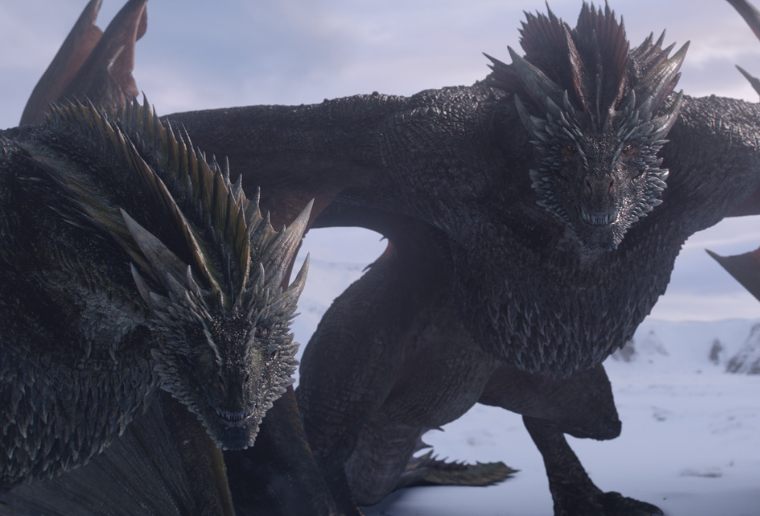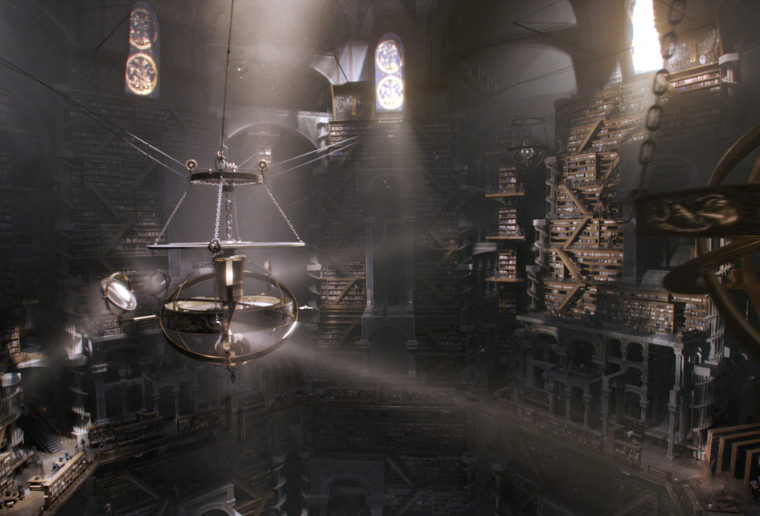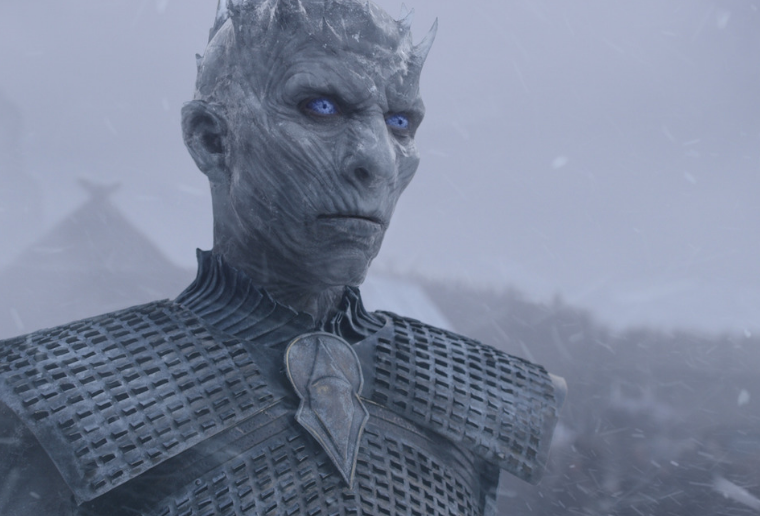Game of Thrones: Season 8 Case Study
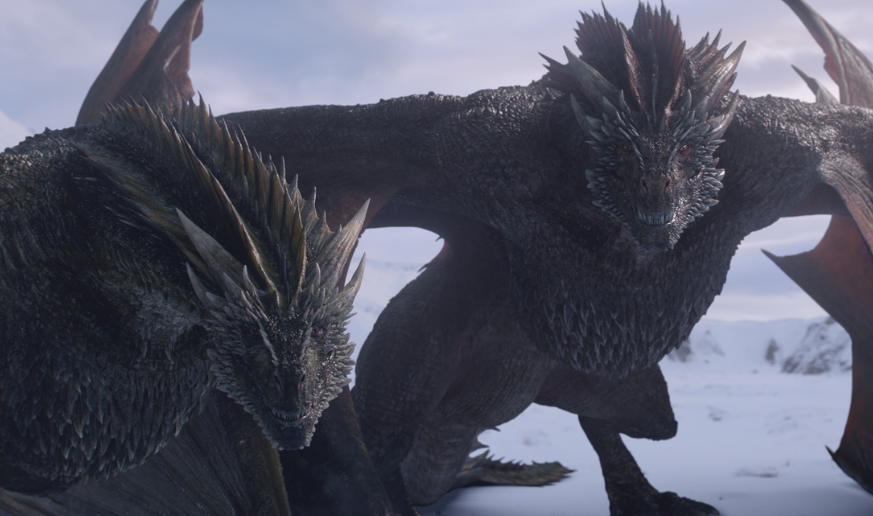
Case Study
Game of Thrones season eight brought HBO’s sweeping story of Westeros to an epic end. It was a bittersweet moment for Image Engine. The season meant a solemn farewell to a project that has pushed the limits of visual effects in television entertainment and enthralled audiences around the globe. But it also meant a final opportunity to once again take point on Game of Thrones most stunning creations: its beautiful, formidable, awe-inspiring dragons…
In the lands of Pentos, an exiled prince brokered a marriage between his sister and a Dothraki warlord. Across the narrow sea, a world-weary war hero cared for his children, his ward and his bastard. From nascent beginnings, HBO was to spin an epic story through 73 episodes, threading its yarn from the sun-bleached stone of Sunspear to the frozen wastes of The Lands of Always Winter.
Whatever your thoughts on the destination, the thrill of Game of Thrones’ journey cannot be denied. The scale of its narrative is on par with that of Westeros’s expansive geography; the production values of a magnitude rarely witnessed on the small screen.
And it’s a journey on which Image Engine could not be prouder to have embarked. The studios’ personal voyage through Westeros saw its artists and animators build iconic locations like Castle Black and introduce characters such as The Night King. But most humbling of all was the entrusting of Image Engine with the grandest of George R.R. Martin’s creations: Daenerys’s graceful yet devastating dragons.
In season eight – the final leg of this epic expedition – Image Engine once again took the reins on Drogon. But this time the studio was also to tame his siblings Rhaegal and Viserion. Across 370 shots, 17 animators worked to balance beauty with lethality in this trio of domineering creatures. Here’s how they brought the dragons’ journey to an end.
The dragons of season eight
“Image Engine was responsible for some 98% of the dragon animation throughout season eight,” begins Tyler Weiss, visual effects producer. “We sent half of this work to partner vendors Scanline and Weta Digital. The other half of the work was fully Image Engine’s: we took those shots from the first stages to final.”
And each of these shots presented a litany of unique challenges, both large and small.

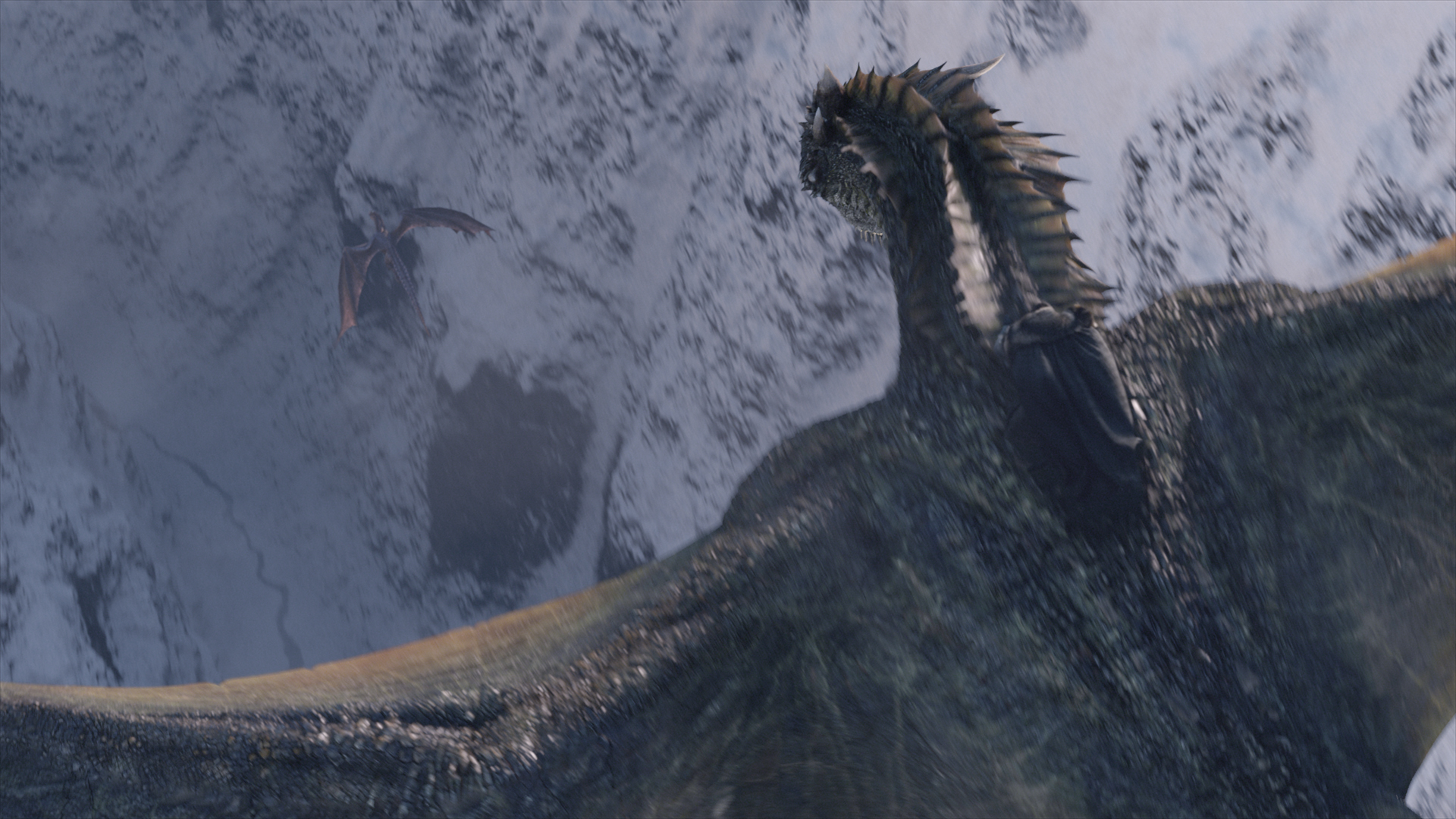
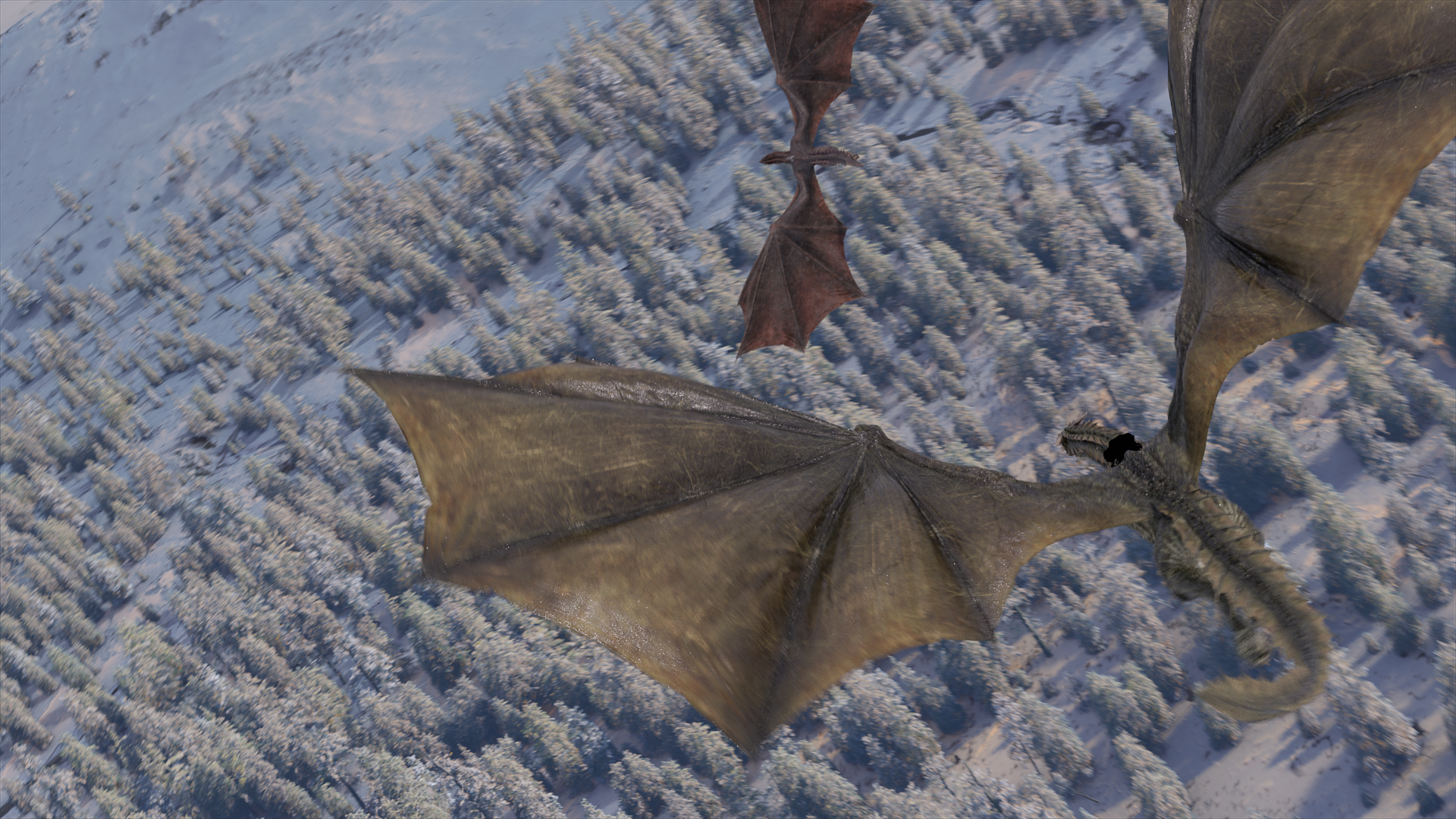
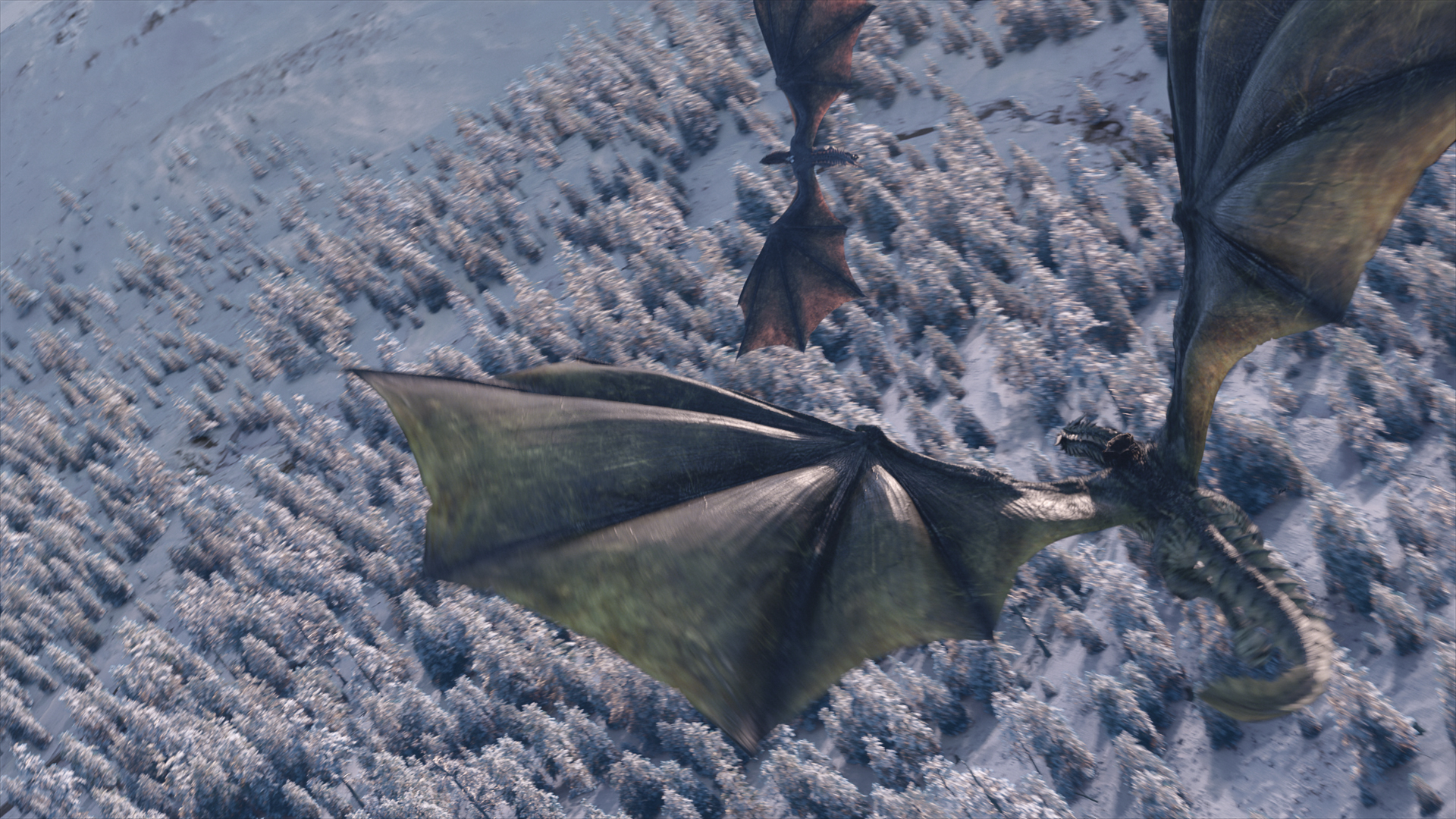
“The animation on this show was always going to be complex,” says Thomas Schelesny, visual effects supervisor. “During every step of the process our animators would need to think about the dragons’ physics, speed and sense of movement. They needed to think about making them feel real. They needed to work within the limitations of live-action photography and match to the neighbouring shots in the edit. And, oh yeah: they needed to be creative.
“There were so many layers to be considered. Each had to fit precisely to the next if we were to create the illusion of singularly motivated performances. I couldn’t be prouder of our team – they did just that…and then some.”
A dance of dragons
One sequence of shots owned entirely by Image Engine presented the season’s – if not the show’s – most complex dragon VFX yet: the dance of dragons.
In episode three, “The Long Night”, Winterfell is besieged by the Night King’s undead army. In the eye of the storm above, Jon Snow and Daenerys engage in an aerial dragon-on-dragon battle with the Night King himself. It’s a stunning sequence, the three dragons and their riders swooping through moon-frosted cloud and cleaving the stars with columns of flame.
Rhaegal and Viserion’s bout of air-to-air combat is of particular interest. This sequence of tearing and clawing comprised not a series of individual animations, but rather one flowing “superanimation” created by Animation Supervisor Jason Snyman.
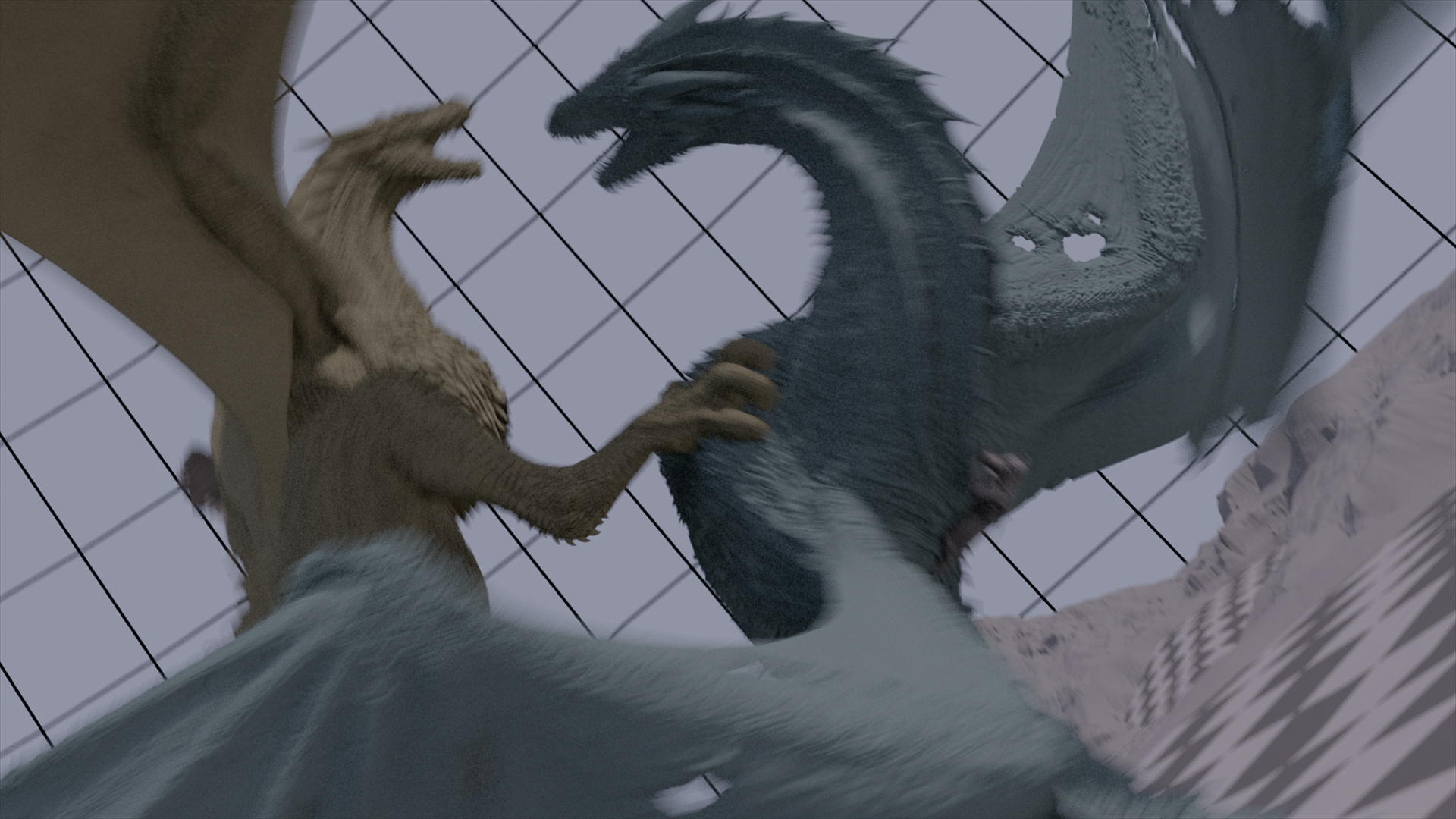
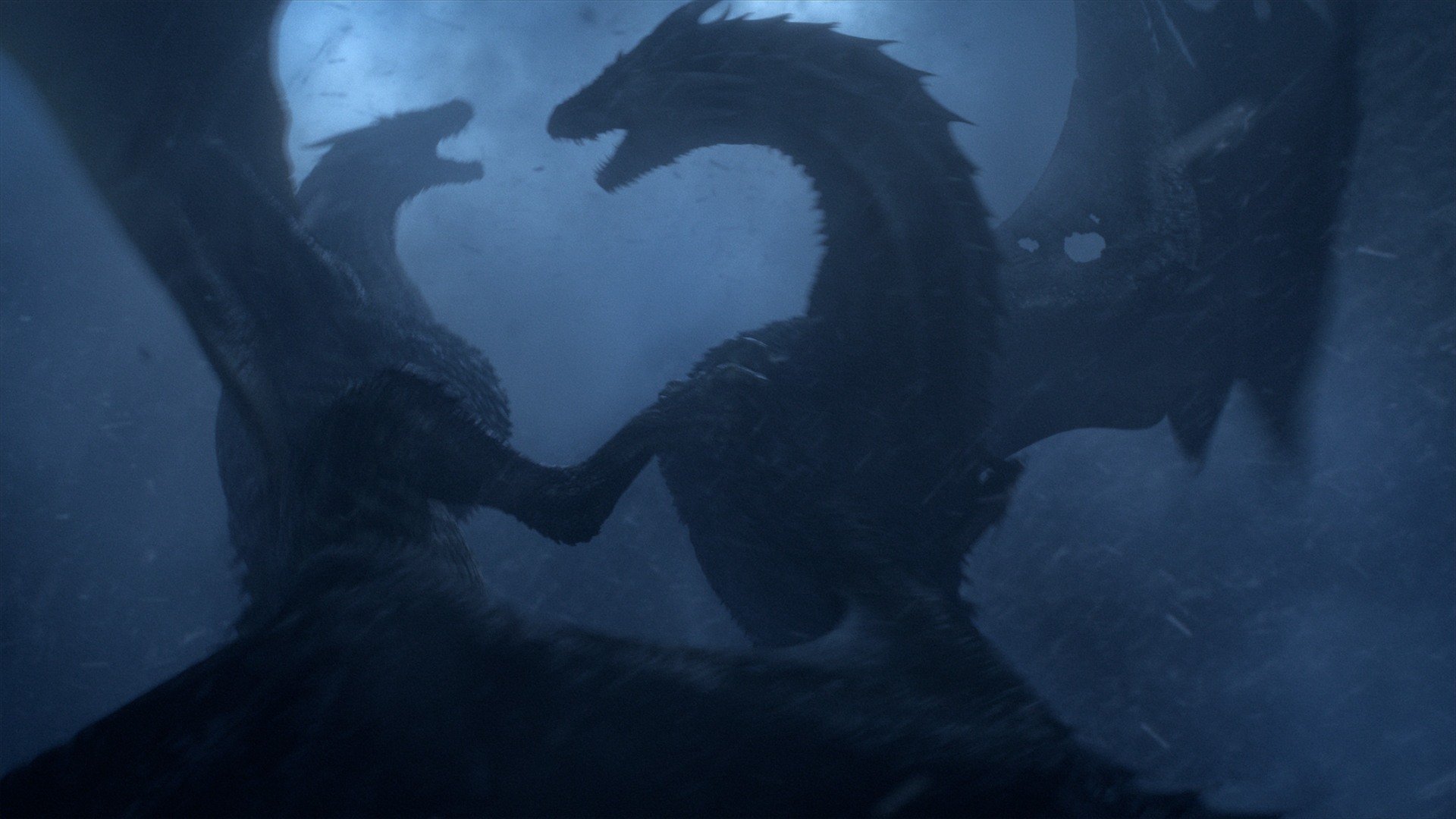
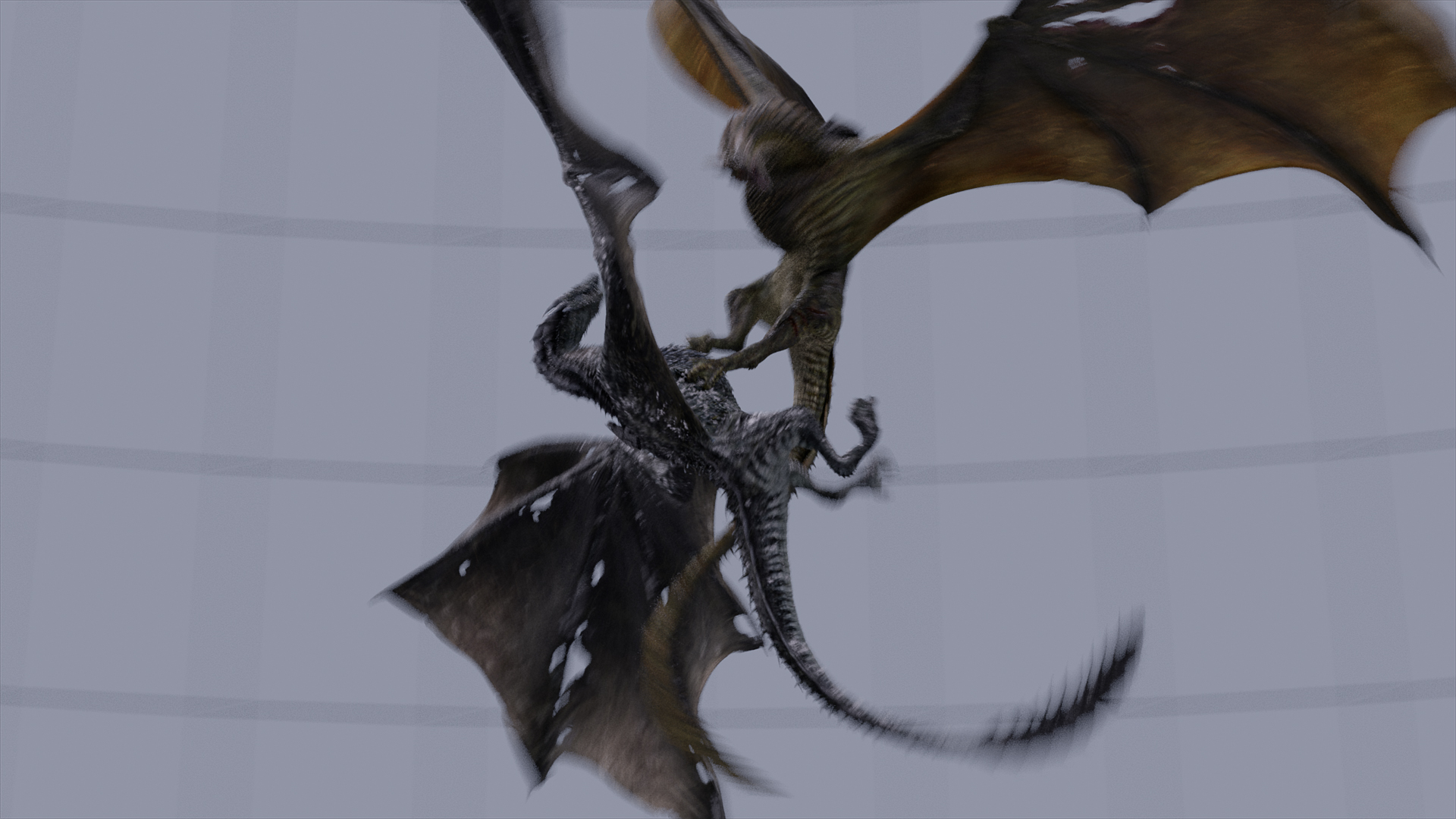

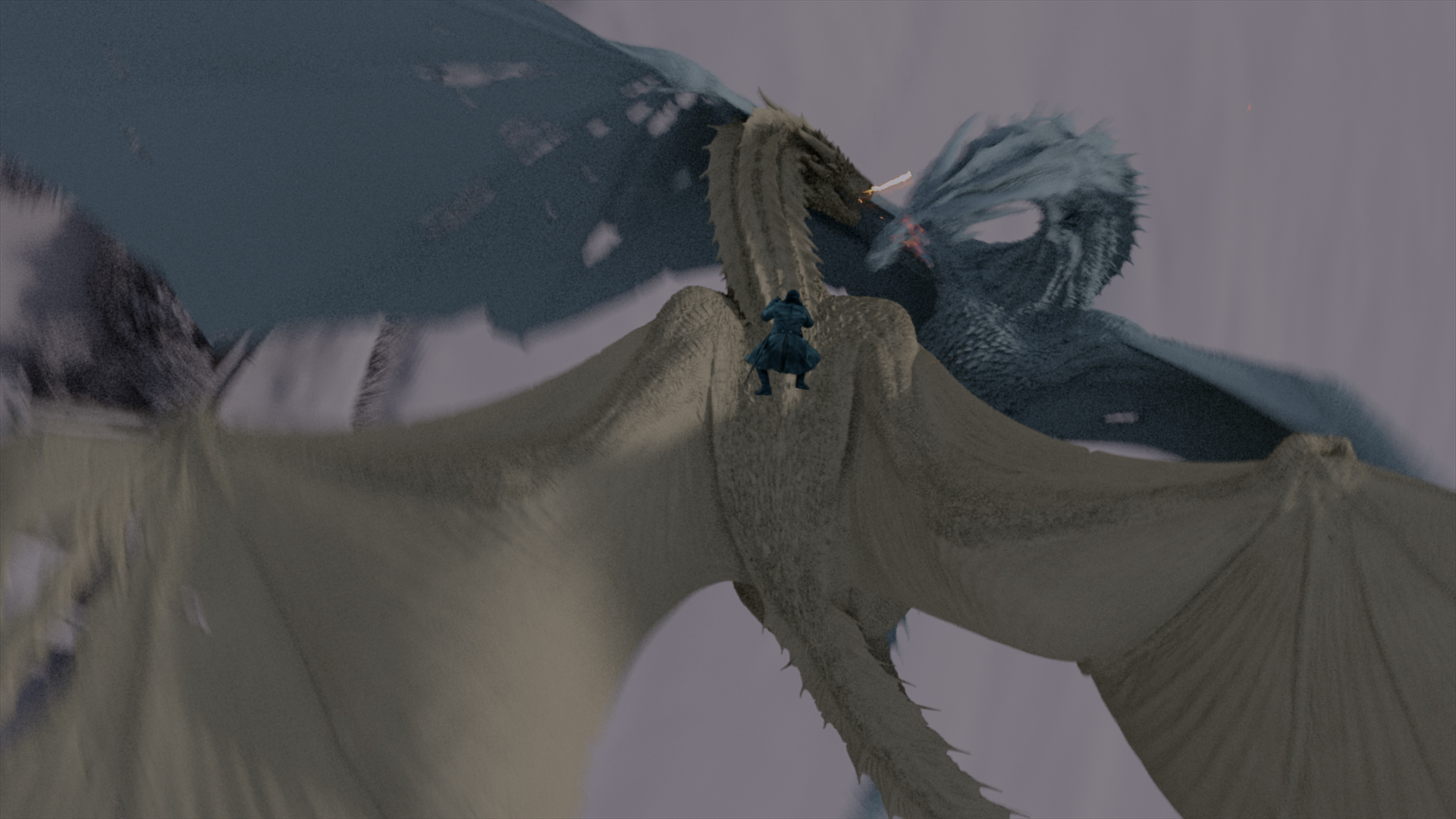
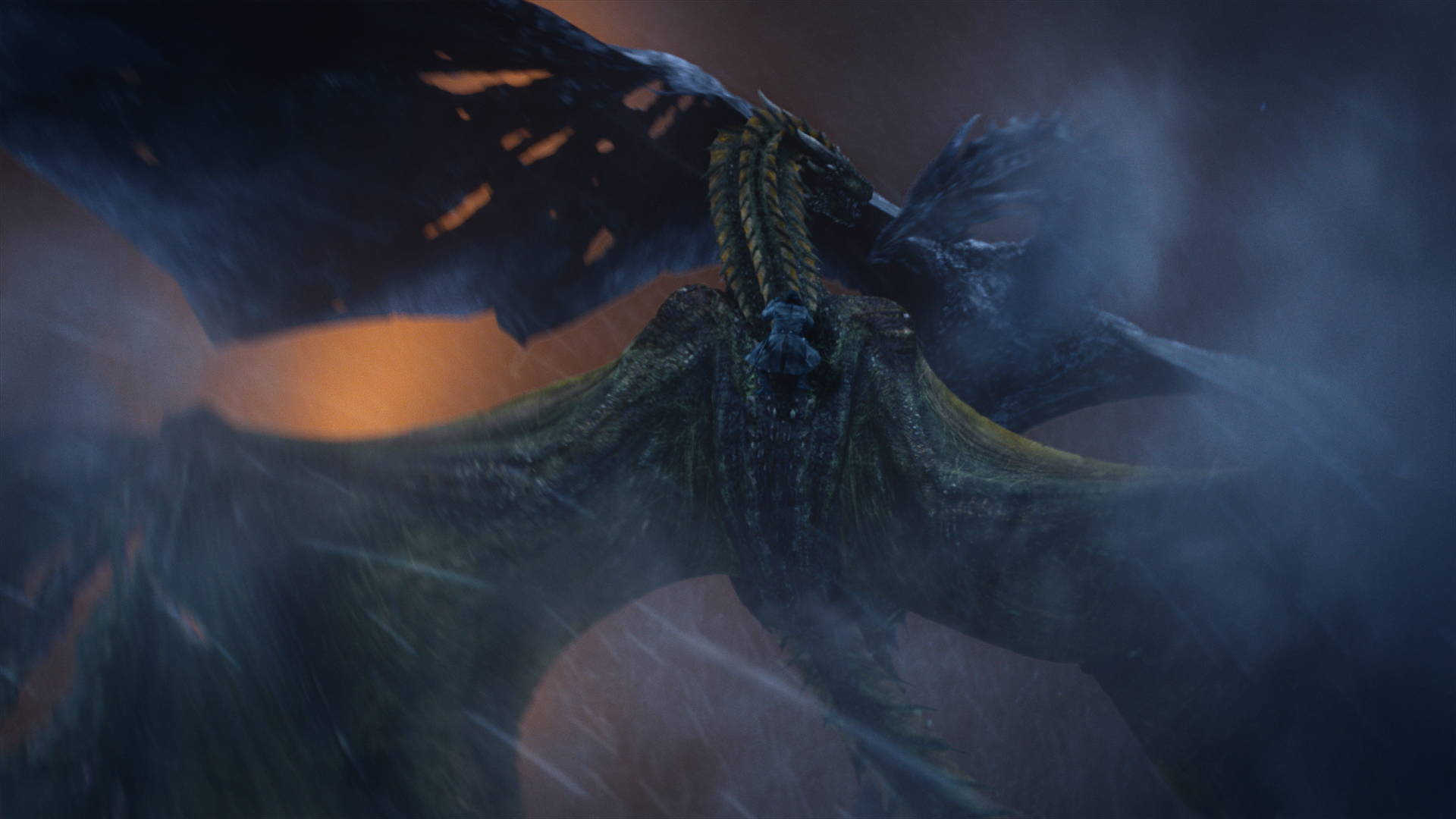
“That whole performance comprises a continuous animation of one minute and twenty seconds, which is broken up into 22 different shots in the edit,” says Snyman. “It was probably the hardest animation I’ve ever done. Not only did we need to create the intricate movement between the two creatures, but we needed to consider flight mechanics at that altitude, velocity, the physics of free fall.
“We also had to make the fight believable from all angles,” he continues. “I made sure that we had a camera per shot, plus some fillers and working cameras. So wherever the camera is pointing, that brawl had to look good.”
Anatomically correct dragons
This superanimated dragon fight would have proved an even larger challenge, were it not for the work completed by Image Engine’s creature effects team’s on the season’s muscle sims. “We wanted to push the dragons’ believability, not only in flight but in everything they do, so we made a big step forward in the dynamics of the muscles for season eight,” says Schelesny.
The CFX team ensured that Snyman and his team of animators had much more control over the way in which the three dragons moved. Whether clashing in mid-air or shaking snow from their wings, it became easy to sell the biological believability of the dragons’ performances.

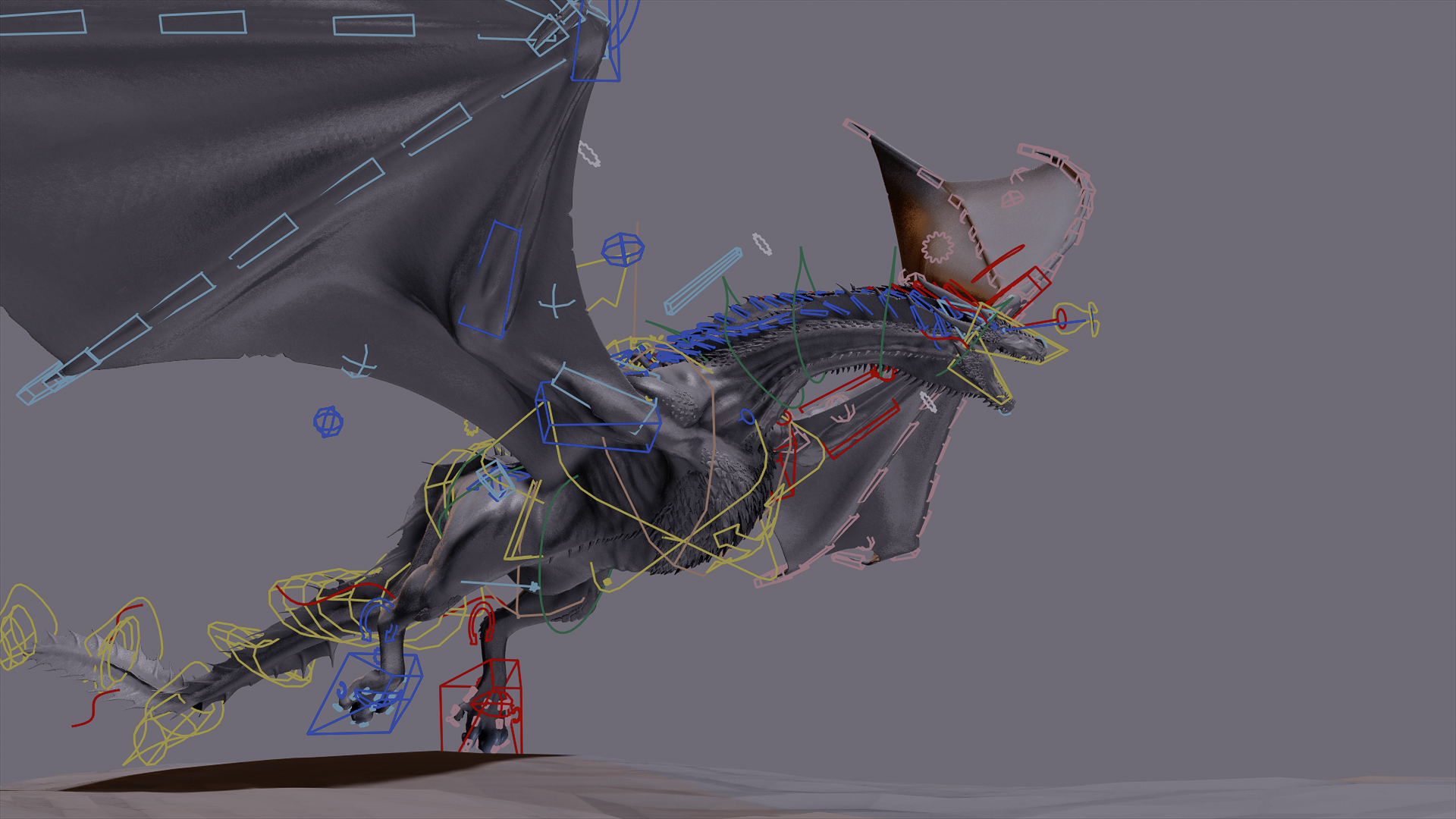
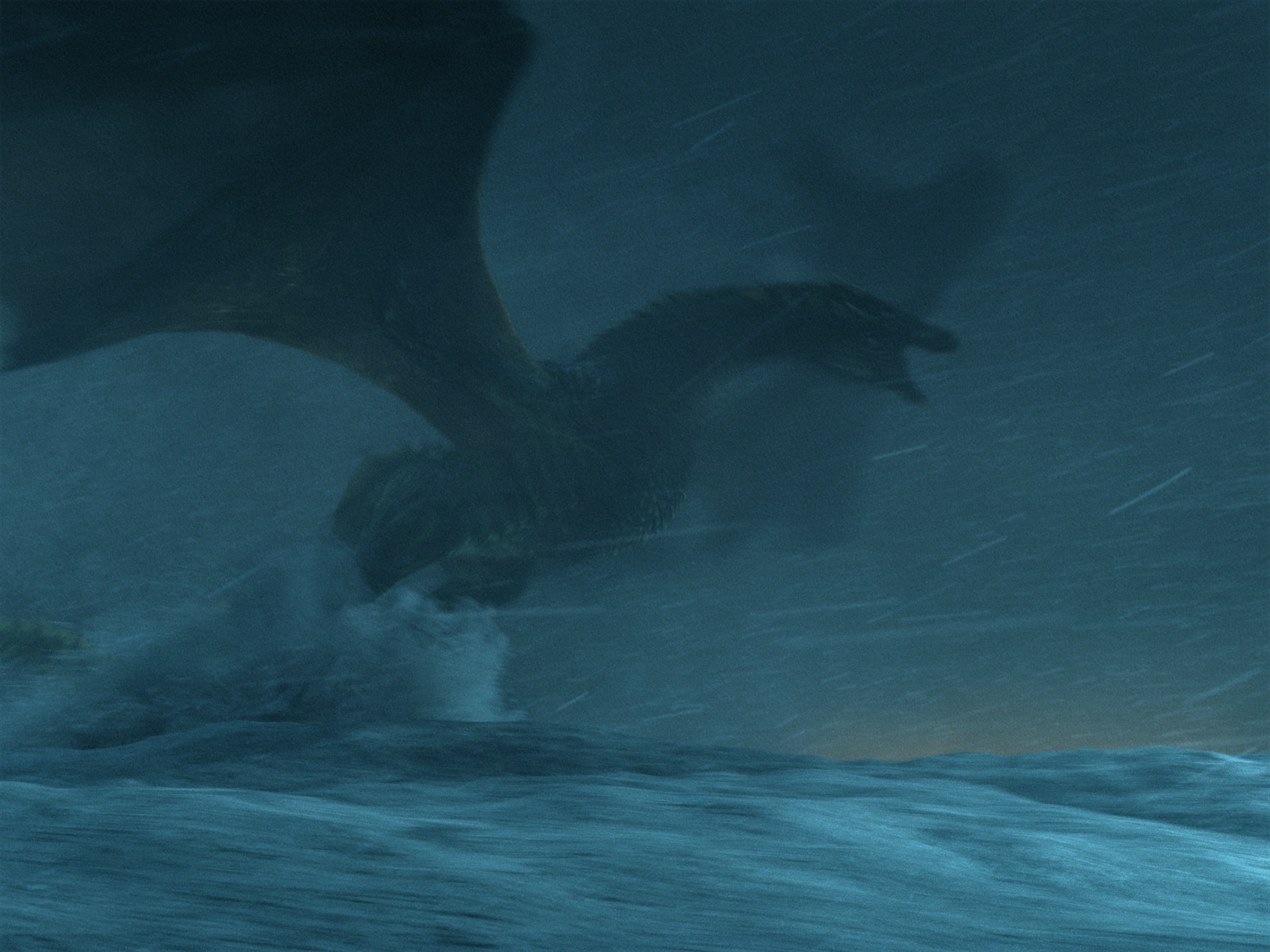
“Muscles are the driving force behind a performance. If a dragon lifts a wing and there’s no structure moving beneath to tell you that the leg is engaged, then the dragon feels like a plastic toy,” explains Snyman.
“If you get a flex before the dragon moves, that activates the part of your mind that suggests biologically believable movement. That’s why the dragon’s muscles are always firing to provoke movement. Wing membranes will ripple and fold when the wings move or react to the wind. Throat tendons will stand out when a dragon is biting. The CFX team did an amazing job in making all of this feel ultra-real.”
Showing sass
The tech updates made for season eight were not only intended for action-packed battles. They were also necessary to better sell what were, in many ways, the more difficult shots: understated emotive performances. “Making a creature look believable when it’s barely moving, when it’s all about the internal dialogue; those are the hardest shots,” says Snyman.
One such shot occurs in the first episode of the season. Jon Snow and Daenerys, having flown from the tumult at Winterfell, stop for a moment of quiet by a cascade of icy waterfalls and steal a kiss. Jon turns to see Drogon and Rhaegal watching from behind. The former is none-too impressed – a look of wry disapproval spread across his reptilian features.
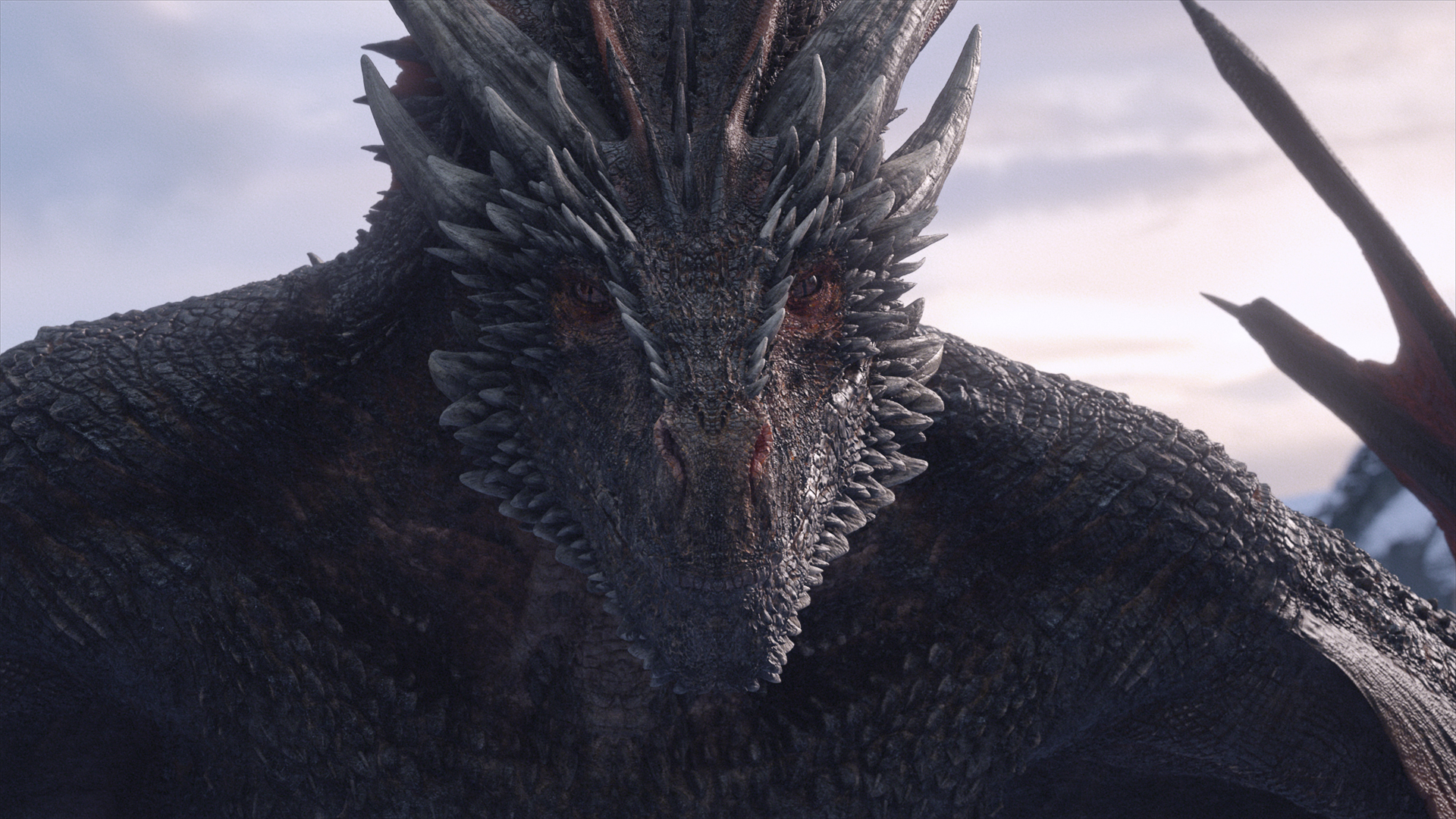
“That shot wasn’t about fury or power. It was so much more muted than that,” says Snyman. “We needed to layer very nuanced face shapes, to slightly tense the eyes and to very carefully control the amount of eye movement.”
As with the muscle sims the dragon’s facial rigs were heavily upgraded for season eight, thus enabling such expressions.
“We built in a lot of flexibility over past seasons,” says Schelesny. “That increased malleability does pose the danger of introducing new problems to replace the old: a flexible rig can get you into trouble if you push the dragons’ faces into extremes. Thankfully, our animators know when it’s right to push a shot further and when to pull back. It took a real subtle hand to achieve the right blend of comedy and danger required of the scene.”
More bang for your buck
Another element of season eight’s dragons that Image Engine sought to optimise was the tricky process of placing human actors atop its CG creations. “Almost every shot of someone sitting on a dragon’s back is photography of that person, not digital,” says Weiss. “Given the quantity of these shots we wanted to find a way to speed up their creation while also increasing the quality.
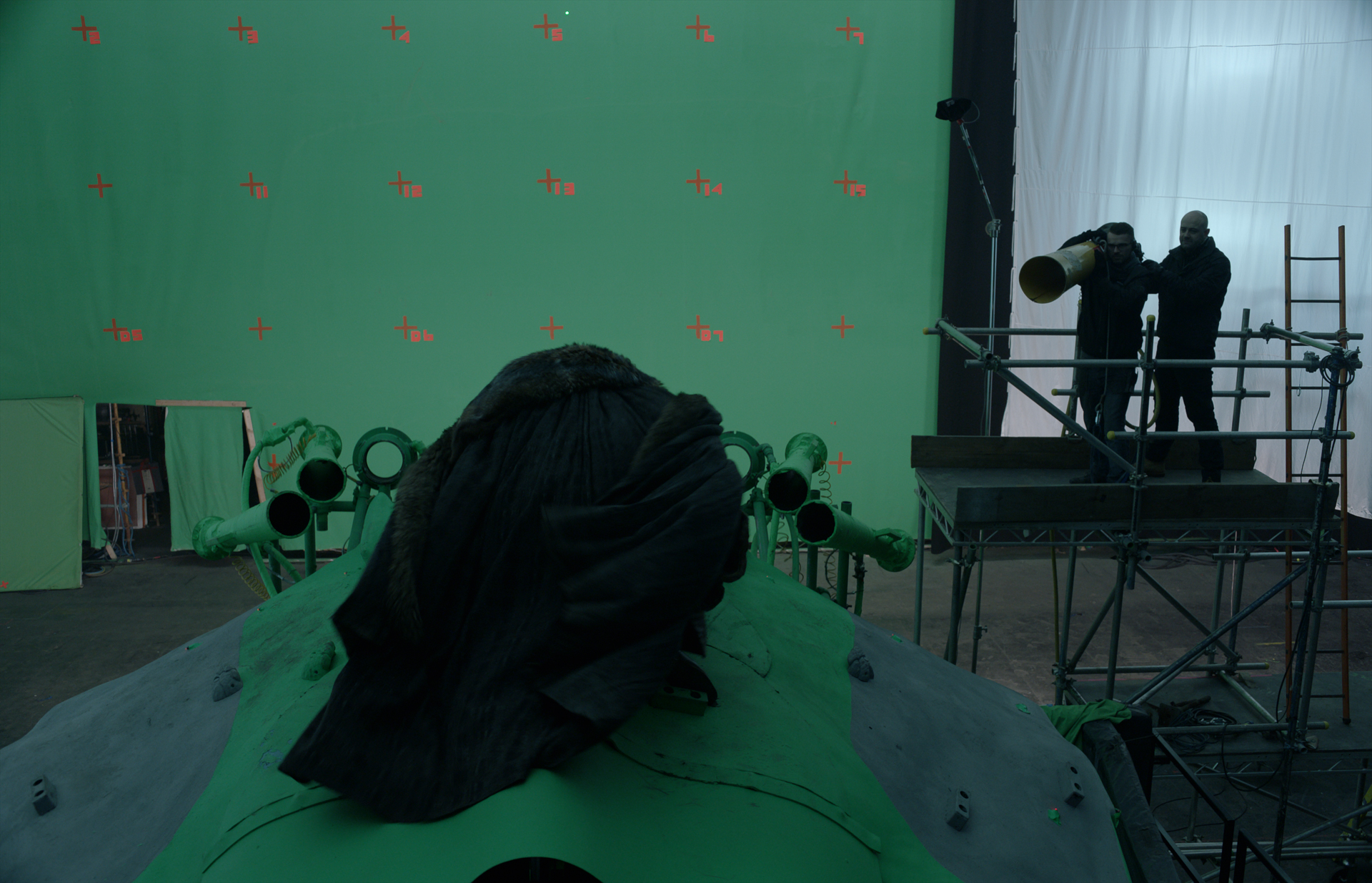
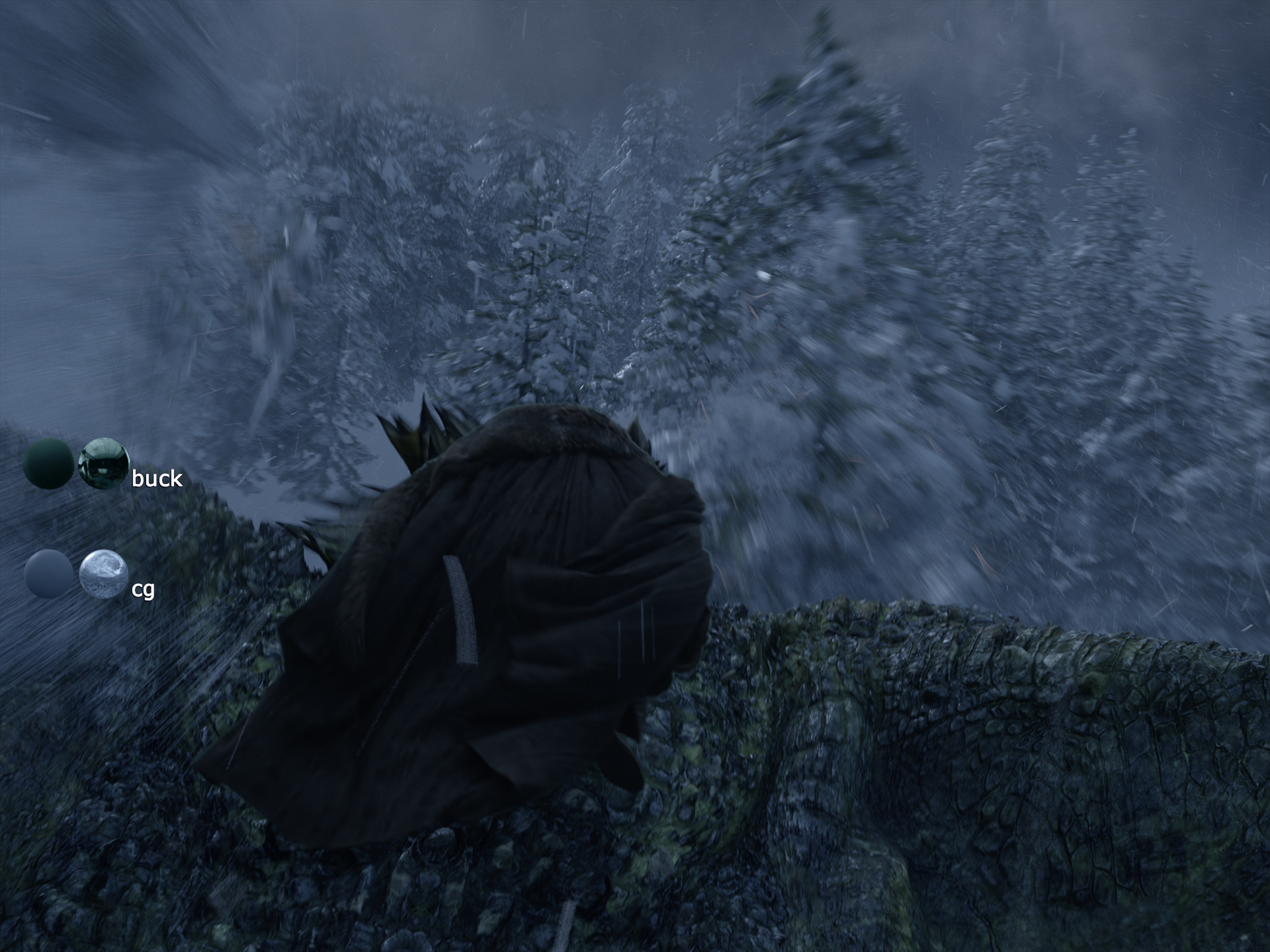
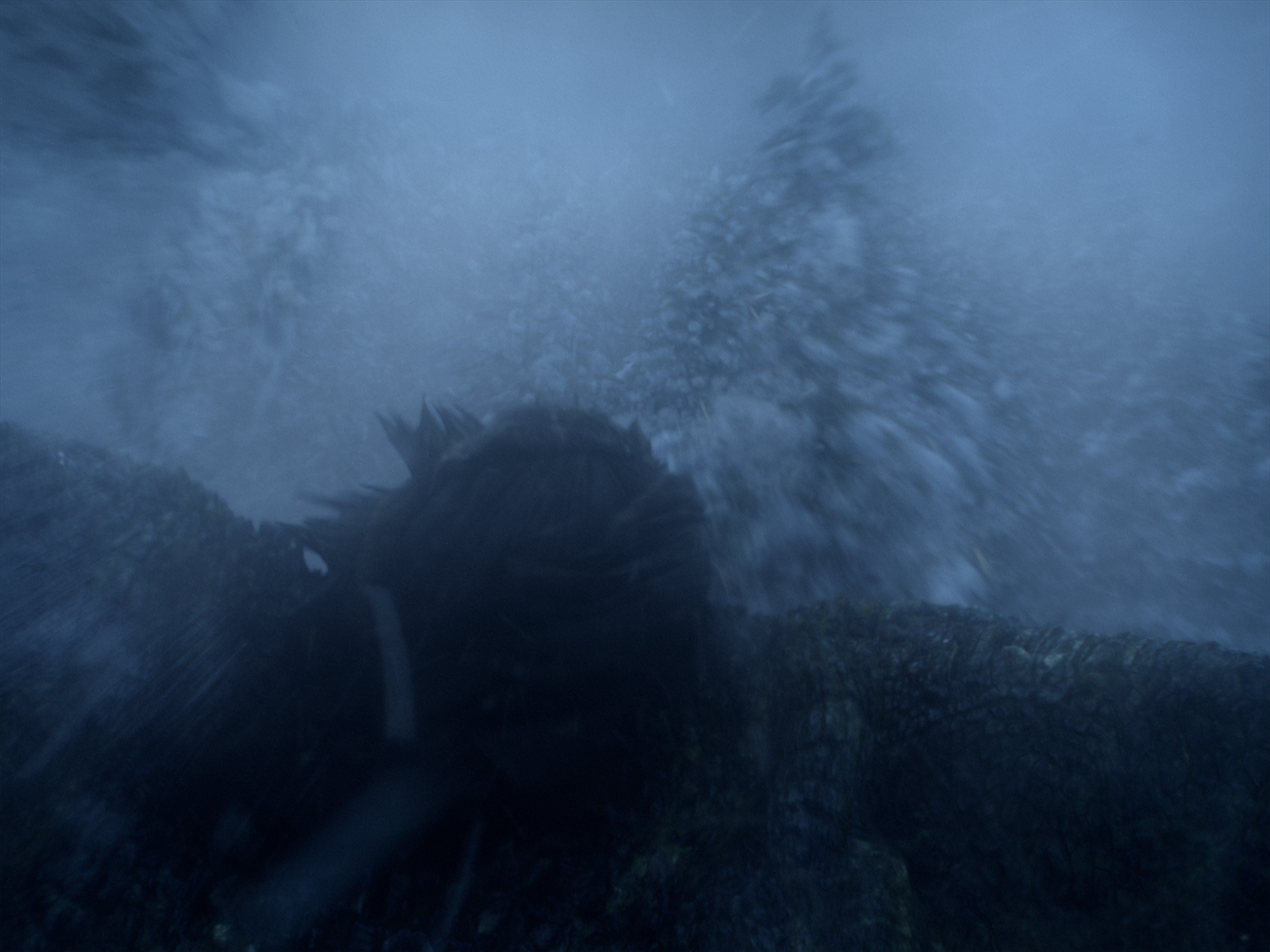 Image Engine first established the dragon rider process in season seven. (Interestingly, the process as listed below is also used to pair all the practical flame effects to dragon’s mouths. In this process, the motion base is replaced by a computer-controlled flamethrower and, naturally, there’s no one sitting on it…)
Image Engine first established the dragon rider process in season seven. (Interestingly, the process as listed below is also used to pair all the practical flame effects to dragon’s mouths. In this process, the motion base is replaced by a computer-controlled flamethrower and, naturally, there’s no one sitting on it…)
- The animation team interprets the previs and takes the dragon shot to 95% completion.
- This 95% completed “pre-animation” is sent to the production, who use it to program a mechanical “buck” motion base.
- An actor rides the buck and performs against green screen as if riding a dragon, while the buck moves in accordance with the pre-animation’s movements..The production sends the resulting green screen photography back to Image Engine.
- Image Engine attaches the on-set photography to the dragon pre-animation. The two move in sync, enabling the animators to bring the performance to completion.
“For season eight we developed an automated tool to streamline the animators’ creative process,” says Snyman. “The animators have the plate photography element present in their Maya scenes. With this tool, if they moved the dragon up, the perspective of the live action shot would maintain its relationship with the shot camera. As such they had more reliable information to make refinements and could really sell the physical connection between actor and dragon.”
Innovators, not just animators
It wasn’t only Jon, Daenerys and the Night King who had the opportunity to ride atop a dragon. An undead horde of wights also enjoy the honour in episode 3. “Drogon lands and the undead wights attack him in droves,” says Weiss. “They’re climbing on all sides: it’s like a mosh pit of flailing creatures, with hundreds writhing around and reacting to Drogon’s movement.”
Interestingly, the tech behind this sequence was based on technology whipped up by Snyman in his free time. “Jason isn’t only an animator – he’s an innovator,” says Schelesny. “The wights all had basic crawling, attacking and running cycles applied to them. Jason decided to find a way to make these movements dynamically reactive to their environment. He called this ‘simcycles’.”
Image Engine built a pipeline around the technique and soon a team in the CFX department were specialists in simcycles. “They created some 300 wights crawling up Drogon, all reacting individually to the movements of the part of his body that they’re on,” says Schelesny. “Each individual performance looks unique, even though it isn’t. It’s all dynamic…and it’s all based on an idea that Jason just decided to come up with!”
For Weiss, it’s all about noticing what’s useful and capitalising on it fast. “We didn’t go into the show intending to work on this tech, but when we saw it, we knew we needed to grab it, build a team and make use of it,” he says. “It’s one of the great things about working with such an experienced team. You never know what they’ll conjure up that will make things easier for us yet more exciting for the audience.”
The stormy skies of Winterfell
And, like Jon Snow, we return from whence we came: those stormy skies above Winterfell and the dance of dragons. Image Engine wasn’t solely responsible for the dragon battle animation, but also the stunning eye-of-the-storm panoramas that serve as its backdrop.
The environment build was particularly tricky as it posed a set of contradictions that Image Engine needed to reconcile. For instance, the scenes needed to feel dark and dangerous yet also stunningly beautiful. Furthermore, viewers had to be able to read the superanimated dragon fight despite it occurring against a tempest of clashing clouds and colour.
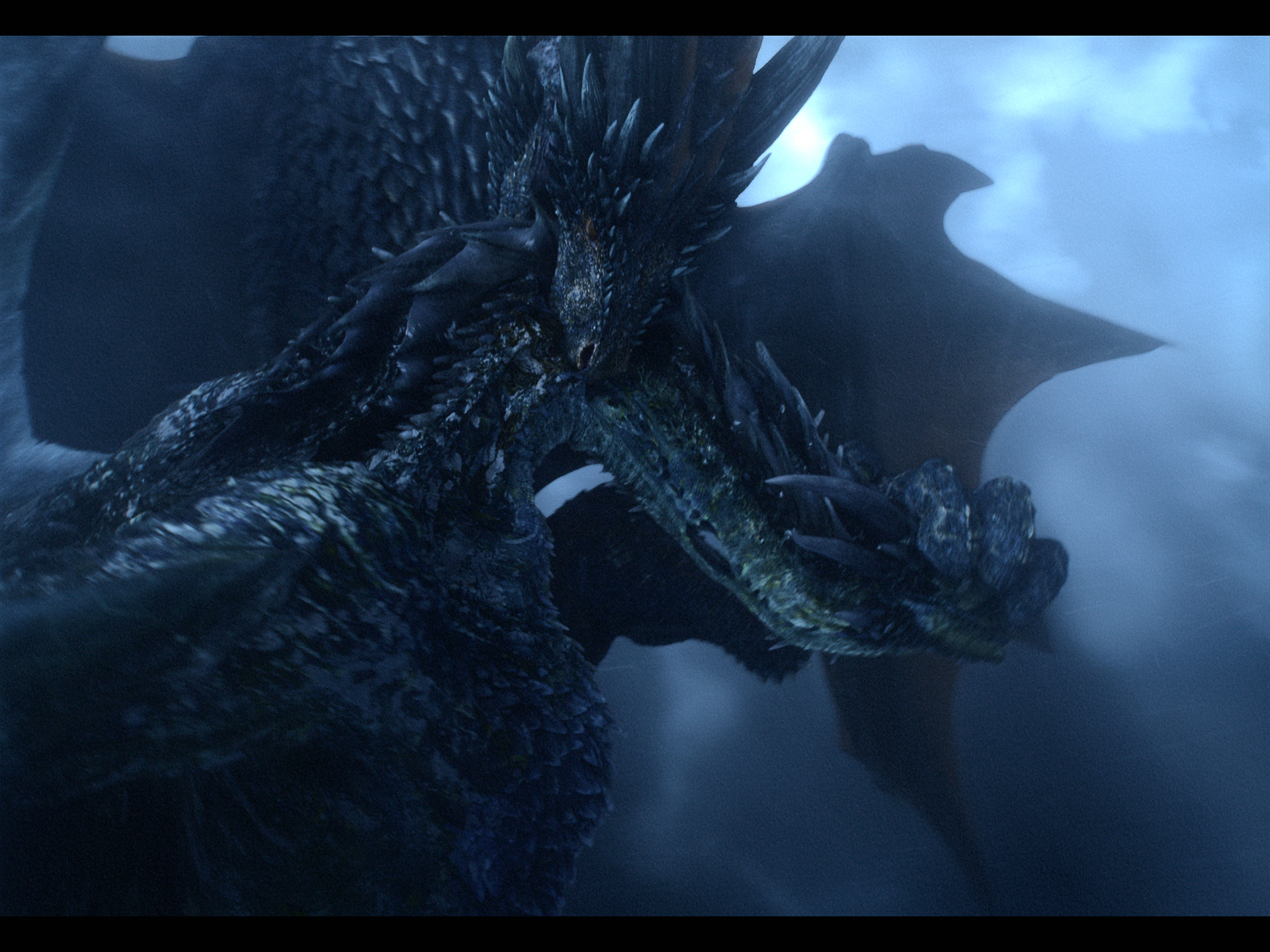

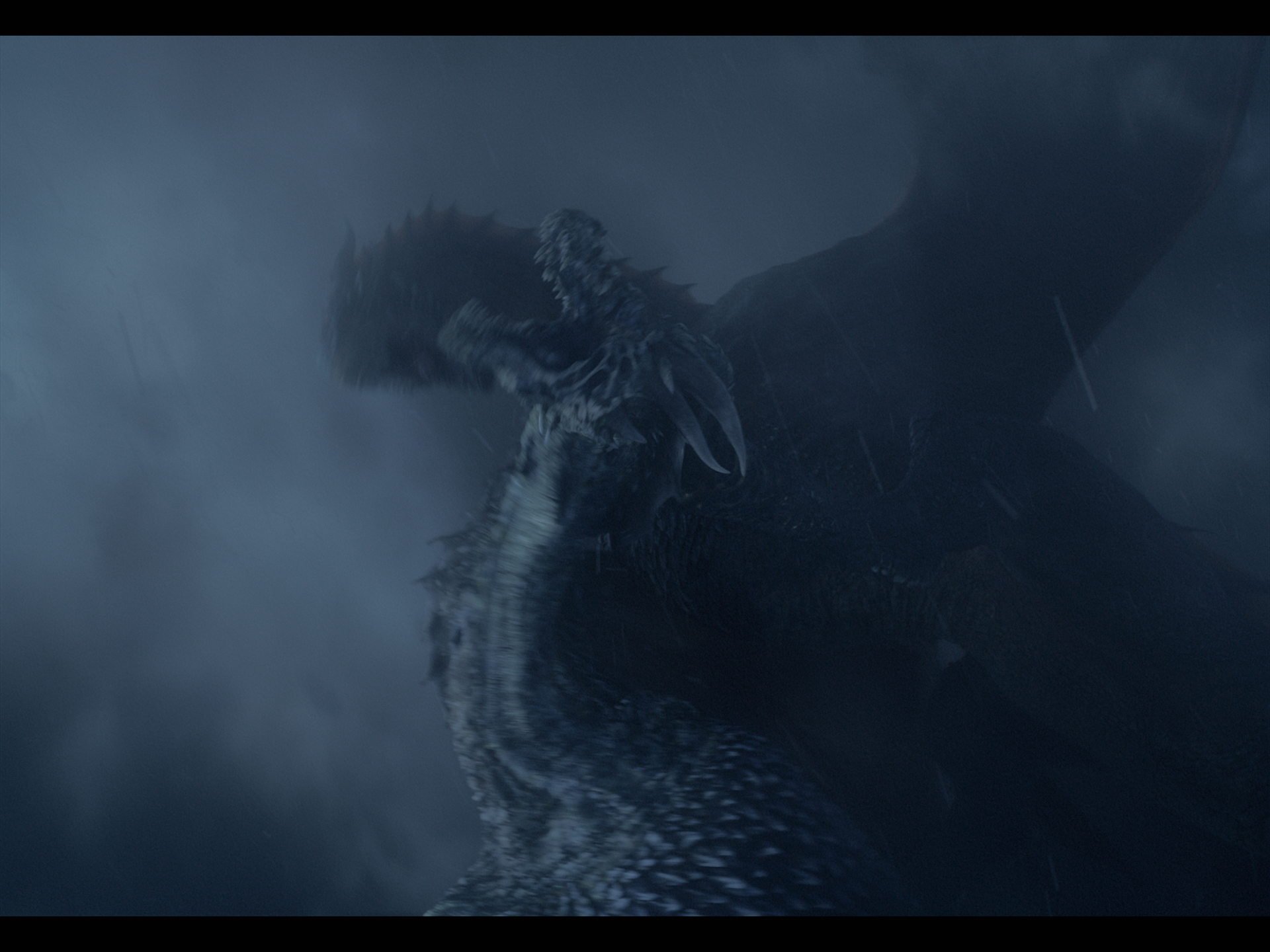 “Generating that scene and finding the right approach was almost like animating a character,” says Hannes Poser, CG Supervisor. “The storm was made up of many 3D volumetric clouds. We would move them to make a specific shot look prettier, to frame a shot in the right way or to have them react to the dragons’ presence as they burst through.”
“Generating that scene and finding the right approach was almost like animating a character,” says Hannes Poser, CG Supervisor. “The storm was made up of many 3D volumetric clouds. We would move them to make a specific shot look prettier, to frame a shot in the right way or to have them react to the dragons’ presence as they burst through.”
Continuity was also a major consideration. “We didn’t want the viewer to feel disoriented, so we created an automated system that laid out the sky above Winterfell with continuity,” says Poser. “This ensured that, whatever was happening, the animation always occurred in the same area and the viewer felt they occupied the same physical space.”
Building Castle Black
Beyond the dragons, Image Engine was responsible for several digital matte paintings throughout the season. This included the creation of distant mountains during Jon and Daenerys’s flight from Winterfell and set extensions for Castle Black.
Image Engine is no stranger to Castle Black, having created the fortress and the towering cliff of ice it abuts for season five. The studio returned to the stronghold once again for the final shots of season eight: the return of Jon Snow and his welcome from the Wildlings of the north. “This was a 100% rebuild for us,” says Schelesny. “We recreated Castle Black in broad daylight and built set extensions on the far side of the Wall. We looked at the past season’s work to ensure continuity in things like the foliage and the distance to the tree line.
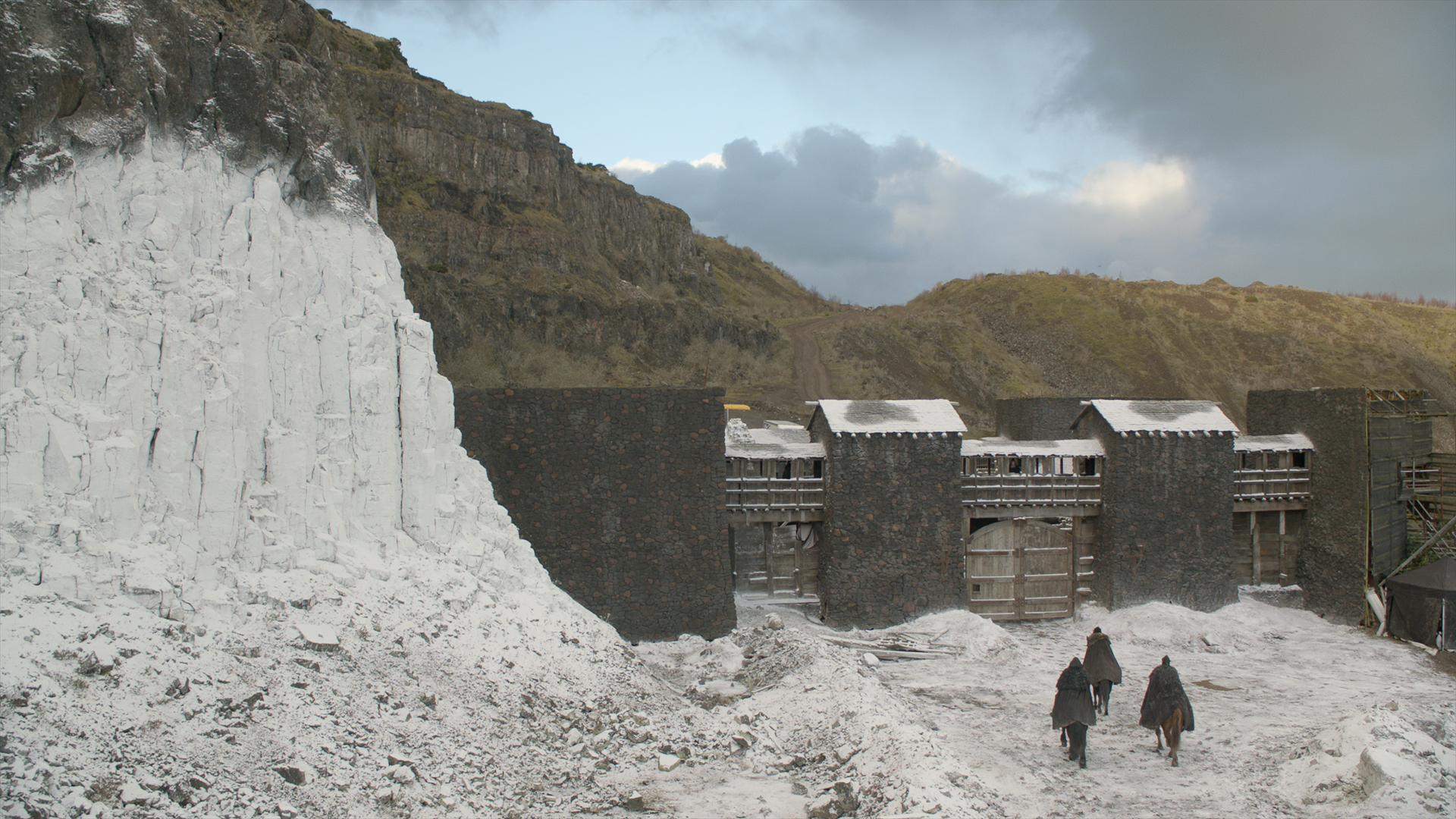
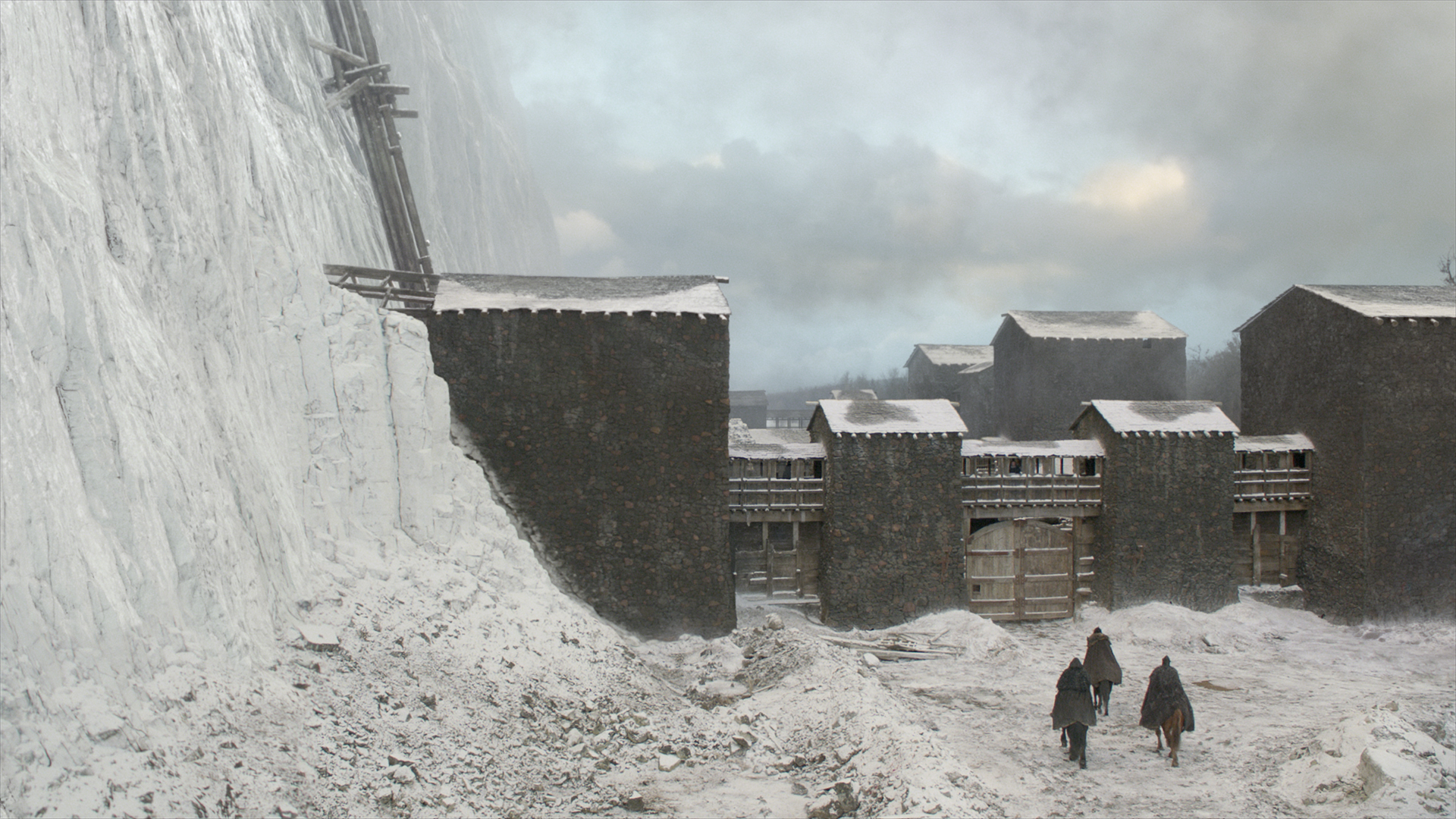
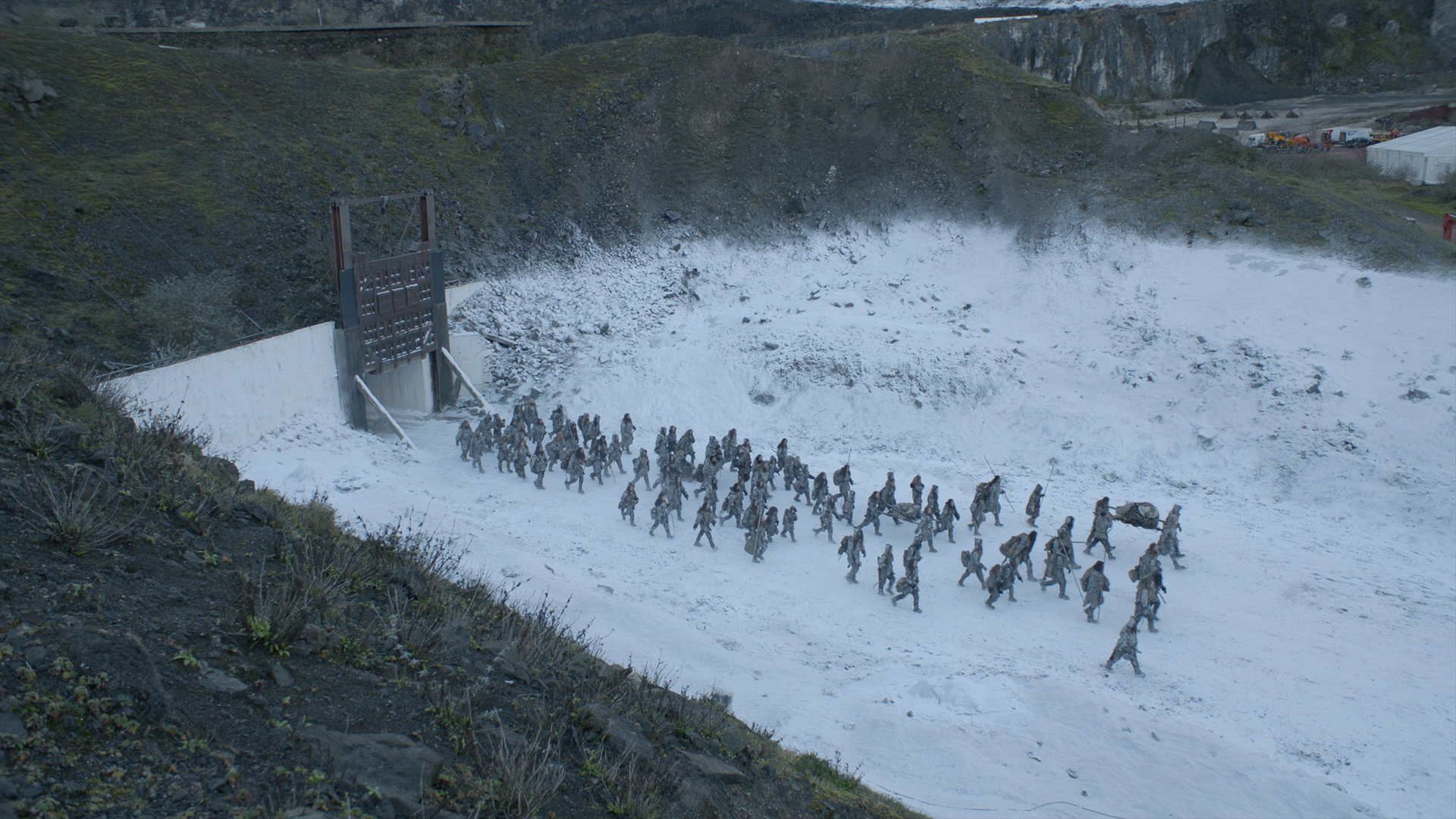

“As for The Wall, we made several adjustments to emphasise its size and recession into the distance. The look of the ice is also different than previous years. It has a sheen of water across the surface and some plants have emerged on the north side – a sure sign that Winter is over.”
And now our watch is ended
Game of Thrones stands as a monumental effort accomplished by some of the most talented creatives working today. All involved in this stunning transplant of George R.R. Martin’s boundless imagination from page to screen achieved something to be remembered. And Image Engine could not be more proud to have played its own part in bringing that world to life.
“We’ve been involved in this since season five and right from the start we knew we were making TV history,” concludes Schelesny. “Nothing will top this for a long time yet. It will take another decade of a super successful show to build to this point before it even has a chance of topping this.”
“We won’t see Game of Thrones eclipsed. Not its story, its visuals or the impact it has had on culture as a whole. Game of Thrones will reverberate for some time yet” says Shawn Walsh, Visual Effects Executive Producer.



